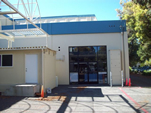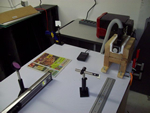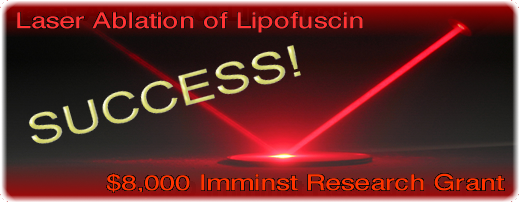Laser Ablation Research

A couple years ago Nason Schooler discovered during experiments on round worms (c. elegans) that liposfuscin - a type of age-related cellular junk - selectively absorbs laser light. Young worms that had small amounts of liposfuscin in their cells could be bombarded with laser pulses with seemingly little effect on their health. Older worms that had accumulated lipofuscin as a by-product of aging were completely destroyed by the laser pulses. This led to the idea that specific wavelengths of laser light could selectively tuned to destroy lipofuscin, perhaps even within human cells, without damaging the targeted tissue. Could this be a direct engineering approach to reversing a type of aged-related problem (lipofuscin accumulation) within human tissues?
We are going to find out. Earlier this year the Immortality Institute created a matching grant and raised over $18,000 to fund the study of Laser Ablation of Lipofuscin. The research will be conducted at the SENS Foundation Research Center in California.
 |
 |
 |
| Research Center | Wet Lab Space | Laser & Optics |
|
Read about the science, the matching grant, and the lead researcher here. |

|
Check progress in the research blog here.
December Entries:
(Nason)
December 4th:
The worms are still chugging along - about a third are dead in the control group. There seems to be some question as to what is meant by 'bad plates'. Bad NGM plates (the plates the worms live on) can be ones that are either contaminated with mold, foreign bacteria, etc. or they can be plates that simply have an OP50 e. coli spot that is off-center. This spot is the worm's food, and the worms typically congregate around it. If the spot goes clear to the side of the plate, the worms often crawl of the plate (where they dissicate and die) or they often burrow beneath the agar around the edges - where they may or may not be recoverable. These problems are mostly avoided by exercising good sterile technique, and being careful to keep the spots right in the center (and letting them dry thoroughly before moving them) when spotting the plates. I hope this helps! If I have time, I'll try making a video showing the worms getting treated...
November Entries:
November 18th: Due to some problems with bad plates, the worm numbers have thinned out a bit in some groups - all of them due to lost worms, no natural deaths so far.
Group 1 (1 laser hit every other day): 7 alive (the rest lost)
Group 2 (3 laser hits every other day): 16 alive (the rest lost)
Group 3 (sham-treated control): 22 alive (the rest lost)
The way the statistics work, the results will be reported as % alive each day, so as long as we have some worms to work with, it's just the statistical power that is lost with fewer worms. Next time around I'm making sure I have better plates, and I will start with 40 worms per group to make sure enough make it to the end. I'm just chalking this up to the usual growing pains associated with getting the experimental system going. The other tricky aspects, such as getting the worms into a drop of water on a slide for treatment, then off again, are going quite well, with no worms lost due to these parts of the procedure.
It also turns out these aren't taking as much time per day as I anticipated, so the next round of experiments will involve at least five groups. I plan on starting round 2 on 11/25; a week from today.
November 14th: I've officially begun experiment number 1. One group of worms is getting a single dose of my pulse train, and another group is getting 3 exposures. This will be a full lifespan experiment comparing longevity of treated groups to sham-treated controls.
November 6th: A short video explaining the optics set-up. Lifespan tests will begin soon.
October Entries:
October 31st:
My leveling feet for the breadboards finally came in yesterday. I was waiting on them before doing my real optics setup, because I had to tear down all the optics in order to install them. Now the boards with feet are all set up and leveled, and I have the laser installed in a vise - which is a huge stability improvement over the wooden platform I had before. I'll try to get some pix up this weekend. As soon as the optics are setup, experiments will begin. I've got fresh batches of worms all ready to go.
October 21st: It turns out that ThorLabs has already shipped the aluminum breadboards I ordered last week. The order got hung up, and I was going to head to the scrap metal yard to see what they had, but oh well. This is better anyway, since the boards are ready to use immediately and won't require any extra fabrication work. They should be here in the next few days, at which point I will begin building my 4 pulse beamsplitting/time delay setup. I'm shooting for starting the first worm lifespan experiment on Monday.